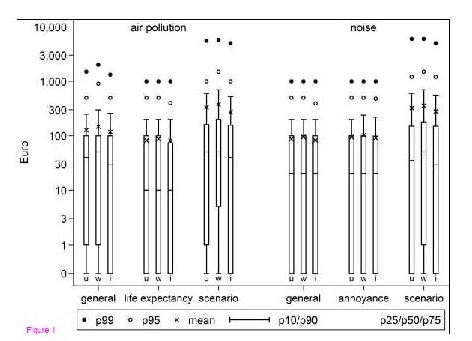Today we review research aimed at finding ouit how to ask the publics in four European countries what cost the see in the impacts of air pollution and noise, recognizing that these two environmental conditions impact the public in different ways and so must be assessed differently. One of the challenges in designing questionnaires is to identify and if possible reduce the number of don’t know (DK) and protest vote (PV) answers through the use of factual choices and scenarios in a process meant to capture what the public is willing to pay (WTP) to reduce the impacts- and then assess if the proportion of DK’s varies by country or socio-economic status etc. About 1/3 of the PVs thought that the polluter or the government should pay for
reducing air pollution or noise.

Key Quotes:
“Willingness-to-pay (WTP) is a central concept in the assessment of the external costs of environmental pollution. It attempts to translate people’s preferences for environmental goods, e.g. clean air and a quiet living environment and willingness to avoid environmental health effects. It describes the monetary equivalent of the loss of welfare related to intrinsic values.“
“The WTP can be assessed by directly asking the individuals what the good or the effect is worth to them using the survey-based method of contingent valuation (CV) approach…the CV approach directly or indirectly questions respondents about their WTP through open-ended questionnaires, bidding games, payment card methods or alternatives thereof. The WTP values thus may cover private costs as well as public good costs, depending on context and value system of respondents.”
“the questionnaire consisted of the three main groups of questions:
- social-economic factors, recognised in the economics literature and others, i.e. household income, gender, education/socio-economic status,
- factors known from the public health field, i.e. severity of health effects, familiarity with the effects, current health status, and
- factors from the social sciences domain, i.e. familiarity and perception of risks, level of awareness, level of concern of environmental health effects, perceived level of exposure.”
“What is the maximum amount of money you personally are willing to pay annually for the rest of your life to avoid 100 additional cases per 10,000 children of poorer reading performance due to traffic noise?”.
“About a third of PV were because respondents thought that costs should be included in transportation prices, i.e. the polluter should pay, with approximately another third because respondent thought that the government should pay costs to reduce levels.”
“The likelihood of protest vote and “don’t know” response was influenced by social demographic, economic and health factors, people’s awareness of effects, environmental concerns, and appreciation of environmental conditions and policies.”






No comments:
Post a Comment